How to Start an Email: 25+ Professional Greetings to Use

Learn how to start an email. Sending emails with proper business etiquette is an important part of daily professional life. Emails can be sent to colleagues, customers, clients, and other outside parties to gather information or relay information. McKinsey Global Institute (MGI) reports that 28% of the average workweek is spent reading and answering emails. Meaning, emails are an important form of communication, just like phone calls and video conferences.
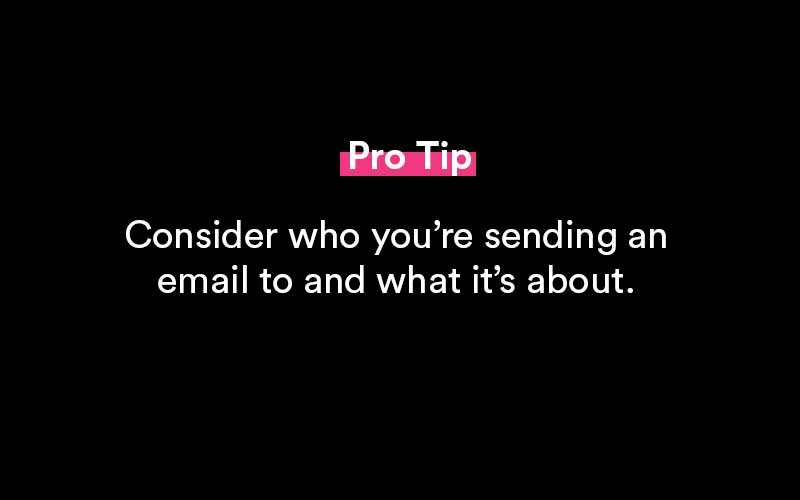
A proper and concise start of an email solicits a reader or recipient's response. Hubspot’s Mike Renahan reports that “the ideal length of an email is between 50 and 125 words.” And goes on to say that “emails this length had a response rate above 50%.” Meaning a lengthy introduction to a professional email could risk receiving a response. Additionally, improper greeting use can suggest a lack of business writing experience.
Inc.com’s Jaquelyn Smith suggests proper business etiquette rules for sending professional emails should include “a clear and direct subject line. The use of a professional email address, including a professional email signature, using professional salutations, using exclamation points sparingly, and to proofread every message.”
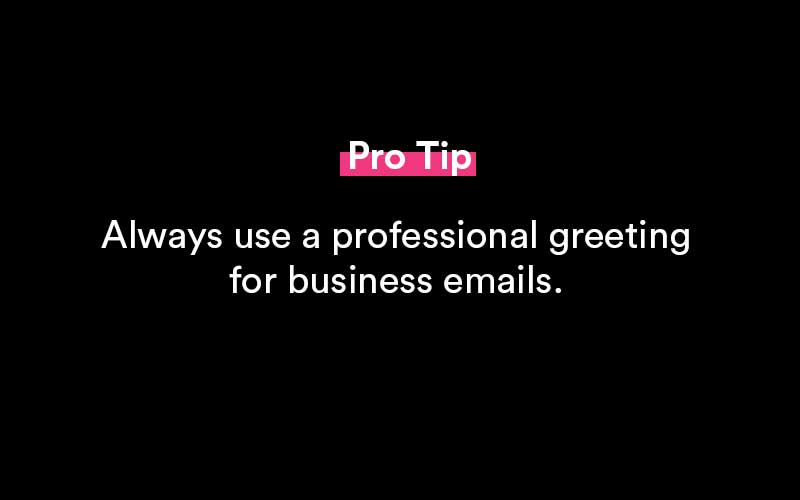
How to Start an Email (Ways to Start an Email)
The beginning of any business email writing should contain the following:
- A greeting. Start the professional email with a nice greeting. Depending on the reason or amount of recipients of the email, the greeting should vary. In a formal email, use the recipient's given last name or surname. In an informal email, like an email between colleagues, use the recipient's first name.
- A transition. The opening sentence or “first sentence” of the email. This may be well wishes if the recipient has not received an email from the recipient in a long time. For example, “Hope you had a great weekend.” Or use a reminder of how the recipient and sender are connected. For example, “I hope you remember meeting me at XOXO Conference in 2018.”
- Reason for writing. Keep the email concise and use the email introduction to inform the reader of the reason for writing and the email's goal.
- Closing remarks. Say thank-you and close the email.
This is the structure of a professional email. And missing out on any part of can cost you the time, effort, and a possible prospect for your business.
Be sure to:
- Spell names correctly. Spell the names of all recipients addressed in the email correctly.
- Use spell-check. An email with improper spelling and grammar can look unprofessional and lack the urgency of the email to the reader.
- Use active voice style writing. Use active voice style writing. This is a professional, formal, and direct tone for the reader.
- Be relevant. Remember who the recipients are, and the intention of the email. Make clear remarks that the audience can respond with easily.
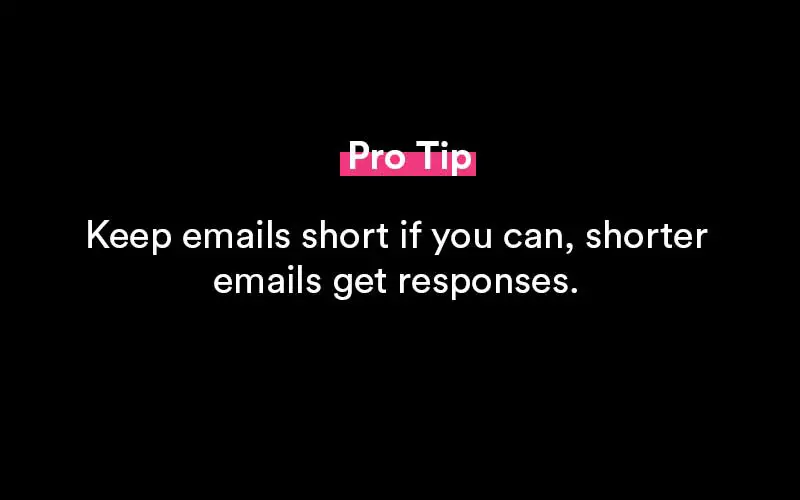
Accompany this with a brief body paragraph, closing paragraph, and email ending to write an effective professional email. Starting a business letter is a similar practice. And should include a greeting (or salutation), an introduction paragraph, a body paragraph, a closing paragraph, and a professional sign-off.
Pro tip: Pay attention to the small details in the email. Your greeting style. Whether you should use "Dear Ms" or "Dear Mrs." These significantly impact the overall impression of business emails.
Email Greeting List
An email greeting (or salutation to be precise) is used in a letter or other written or non-verbal written communication. The most common form of salutation in the English language is “Dear,” followed by the recipient’s given name or title.
When choosing a greeting, it’s always best to address the recipient by name rather than using a generic greeting. Using the recipient’s name (or person’s name) suggests that the email is for the recipient. A formal greeting can use the recipient’s name. Instead of using their first name, use a surname or last name prefaced by “Mr,” “Miss,” or “Mrs.”
When emailing one person:
- Hi [Name],
- Good morning [Name],
- Good afternoon [Name],
- Hello [Name],
- [Name],
- Dear Mr/Mrs [Last Name],
- Thanks for getting in touch,
To use when writing to more than one person:
- Hello all,
- Hello everyone,
- Good morning,
- Afternoon,
- Good evening,
- Hi there,
- Hi team,
- All,
When writing an unknown recipient:
- Hi [Team Name],
- Dear [Job Title],
- Dear CEO,
- Hello Hiring Manager,
- Hi there,
- Greetings,
- Hello,
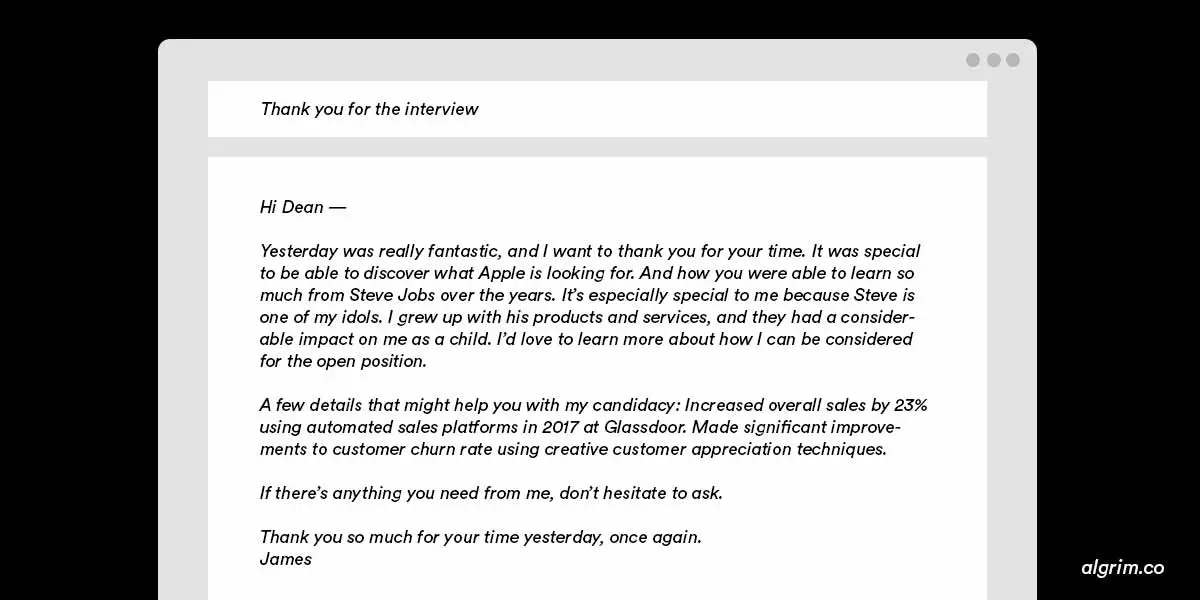
A proper email greeting should pair with a formal writing style of the body paragraph. When writing a formal letter, business letter, or professional email, use active-voice style writing. Grammarly.com defines active voice as having “a strong, direct, and clear tone.” Formal writing should always be used in business correspondence.
Business correspondence includes emailing colleagues, writing an email to a client (or potential client), writing legal emails (or letters), when writing emails with business or professional email addresses (a generic formal setting), or when authoring a business letter (a cover letter, letter of recommendation or reference letter). This includes writing an email message that’s on behalf of a business (as an employee).
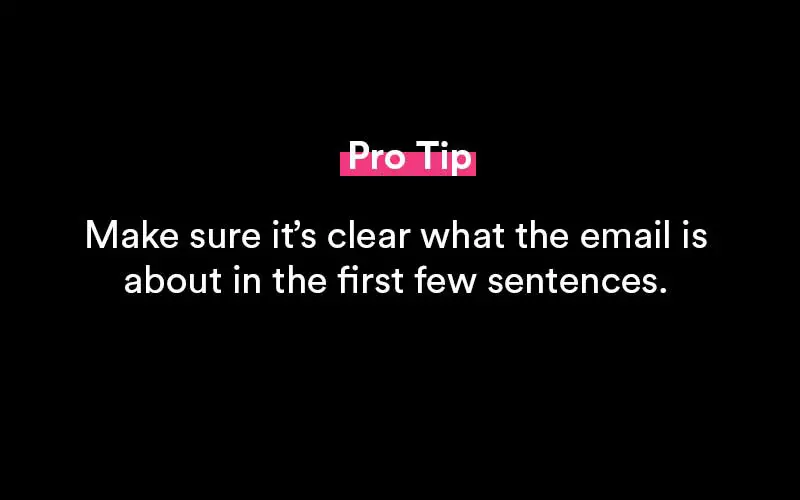
Informal emails are an email sent between friends, who don’t work together. For example, an email to a close friend regarding dinner times.
Examples of Starting an Email
When sending a general professional email for the first time:
Start of the email message.
Great for first-time correspondence. And general business needs. Great when you know the name of the recipient.
When applying for a job:
I’m writing this email to submit my application for the position of Product Designer
When scheduling a meeting:
I’d love to schedule a meeting to discuss
After having a meeting:
Thank you for your time yesterday
When introducing new teammates:
I’d love to introduce you two
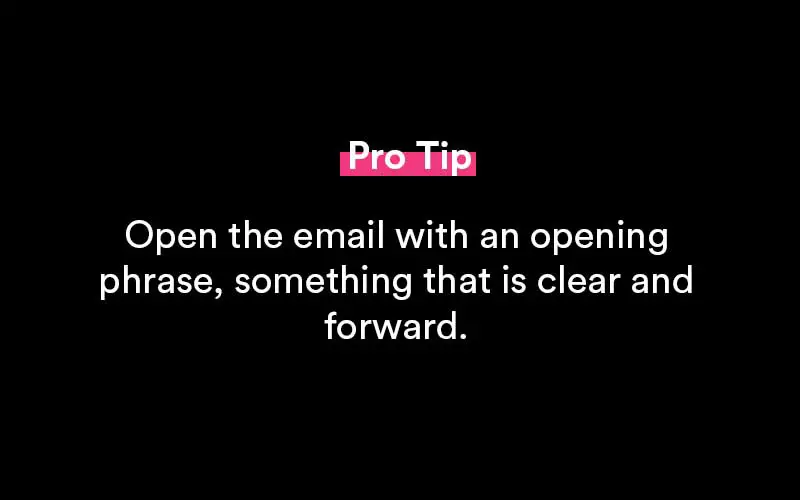
When accepting a job offer:
I’m pleased to be sending this email accepting the job offer of Product Designer
For when replying to a group:
I want to recommend that we meet about this matter
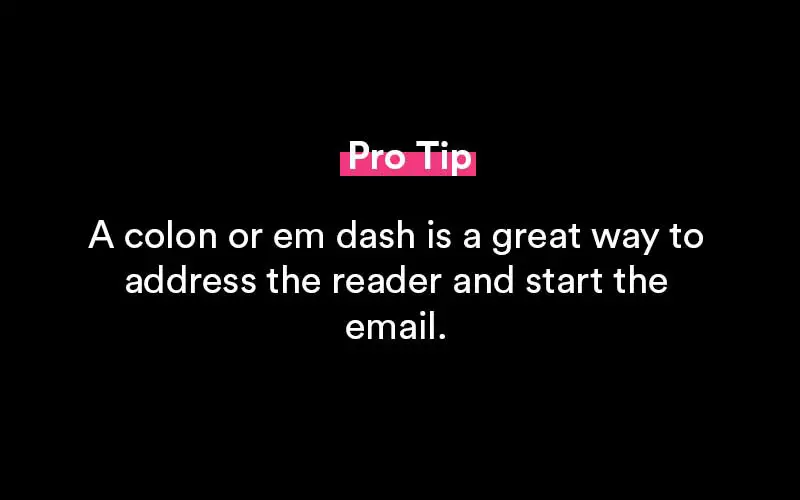
To use when introducing yourself:
If you recall, we met at XOXO Conference in 2018
When sending an email newsletter:
This week's email newsletter reviews a major email marketing service provider and email marketing software
When sending email marketing or an email campaign:
You’re receiving this email as part of an email campaign you signed up for on Facebook
Used when sending a cold email:
I’m writing you this email after reading your blog
Sometimes referred to as an "outreach email."
When writing a welcome email:
I want to introduce myself and say hello to you all
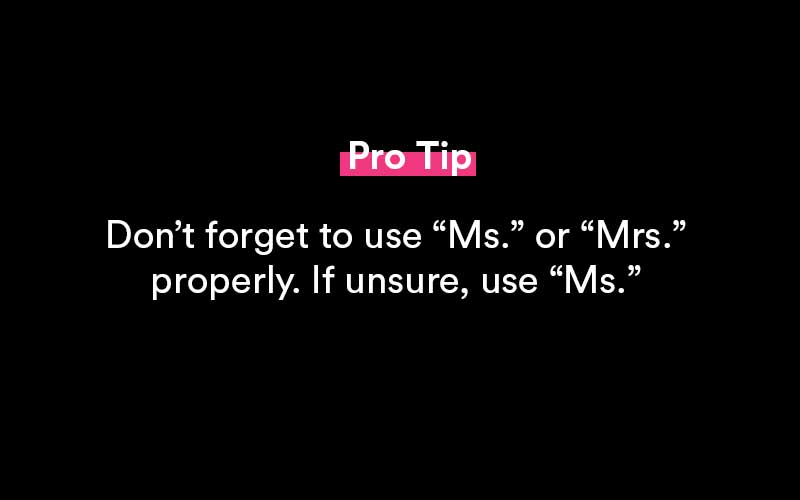
For when writing n email to a professor or teacher:
I'm very passionate about your course, and I'd love to speak with you regarding extra credit
When writing an email to a supervisor, manager, or boss:
I'd love to speak with you regarding the marketing project you discussed on Friday, July 10th
Colon or Comma After the Greeting
When writing a formal letter, there are three options for the punctuation to use after the salutation. A colon, a comma, and an em dash (—). The use of a comma is most common in the English language. It looks like this:
While the colon looks like this:
Both are acceptable forms of separating the greeting from the initial paragraph or opening paragraph. Acceptable in a business letter, cover letter, or another formal letter. Improper use of the separator is a small formality but a key indicator for the reader. For example, in a job application, this may indicate to the reader that the author has poor verbal writing skills. Use either the comma or semicolon when deciding between punctuation separators.
Email Greetings to Avoid
Avoid these commonly used email greeting lines when writing formal emails:
- To Whom It May Concern: Using "to whom it may concern" lacks personality, customization, and a choice not to spend time researching the recipient’s name.
- Dear Sir or Madam: Using "Dear sir or madam" is considered poor business etiquette. As it implies the recipient’s name is unknown and falsely suggests a preferred gender of the recipient.
- I Hope This Email Finds You Well: A generic greeting used when the recipient's name is unknown. This generic greeting can trigger an email readers' spam filtering technology.
- Hey/Yo/What’s Up: These would be an informal greeting. And doesn't suggest a professional email. Variations of these informal introductions include “Hey guys” or “What’s up guys!”
How to Write a Professional Email
Here's what to consider when writing a professional email.
Consider the target audience
It's best to consider the target audience and email recipient. Think about who they are, what they want, what they might be expecting to read, or what they want to read. Asking these questions can ensure that a shorter email is produced and increases the chances that the email will be responded to. It's important to write an email with brief, relevant content using simple words and phrases.
This practice is empathy. If writing an email to a client or customer, consider this practice when writing an email. Make sure to consider who you're writing the email for.
Avoid writing to the group
It's a common mistake to write a "Reply All" email but write to only one person in the group. Let's presume that the email is a personal message. Then all the other email recipients received the message. This act can create a slightly "embarrassing" scenario for everyone involved. Consider who the email should be and double-check that a "Reply All" mishap isn't going to happen.
Use an active voice writing style
Active voice style writing is having a "strong, direct, and clear tone." The more clear and definitive an email message, the better.
Have a purpose
The email should have a purpose. Whether writing an email to be used in an email list (for marketing purposes) or writing an email for a professional job application. Consider the email purpose and be sure there's a clear "call to action" in the email. The email should contain information, insights, and asks that make the recipient respond or engage with the email.
Make the intention of the email clear
Using as few words as possible, write a clear message. Use the opening line to display the intent of the message. A clear email message has a higher likelihood of receiving a response. Think clearly about how the recipient might interpret the message and be sure there is a clear intention behind what the email is about. Check the body of the email for grammar issues. And the greeting. A misspelled name, for example, could be detrimental.
Start the email with the information
It's best to "cut to the chase" with an email. Get into the purpose of the email as soon as possible. Either inform the reader of the information they requested. Or gather the appropriate information from them. Unless this is a less formal email, pack the body of the email with the information the recipient requires.
Be sincere
Kindness is well-received when it comes to email messages. Consider how a phrase or word can have misinterpretation. Be sure to consider the misinterpretation opportunity before sending it.
Say something nice at the end
Say a nice thing at the end of the email. Thank them for their time and show appreciation for them responding to the email or request within the email.
Consider time spent reading the email
If writing a long email, consider the time it will take to read. Consider what the email's original purpose is and whether it can cut in the word count. A long email, while sometimes necessary, has a steep ask: time. If the email is important and it's important the recipient read through the email in its entirety, consider the email's length.
Don't forget a great subject line
The email subject line should align with the purpose of the email. Make sure the subject line is simple, clear, and short. The shorter the email subject line, the higher likelihood the recipient is going to open the email. Be sure to coordinate the purpose, information, or "asks" in the email with the subject line.
Popular Resources

Featured
35+ Phone Interview Questions & Best Sample Answers
Phone interviews have become a core part of the process when attempting to find a secured placement for an open position. Companies receive massive responses from potential candidates for any..

Featured
12+ Best Questions To Ask A Recruiter
Concerning a job search, you might receive numerous offers from your recruiters. Before you choose one, you need to assess all the conditions, for which it is vital that you know everything associated with the offered position..

Featured
Answering "What Makes You Unique" In A Job Interview
Answering this question during a job interview requires more than knowing why you are unique as an individual. Yes, the true scientific answer is made up of two main components: your..

Featured
250+ Ice Breaker Questions for Life
An ice breaker question is a question that’s asked from one person to another person in order to act as a conversation starter. It brings a connection...

Featured
10 Best Answers to "What Motivates You?"
Open-ended questions like “What motivates you?” can elicit a deer-in-the-headlights reaction from job candidates if they are unprepared. It’s a broad question and can leave the interviewer..

Featured
Answering "How Did You Hear About This Position" In An Interview
A lot of interviewers ask this question - how did you hear about this position? This way they can judge you if you are a passive or an active job seeker..

Featured
8 Best Thank You Emails After an Interview (Samples, Free Templates)
Writing a thank you note after an interview says a lot about you as a potential employee. Most notably, it says that you care about the opportunities presented..

Featured
Writing a Resignation Letter (How To Write It, Samples)
Writing the perfect letter of resignation is more of an art than it is a science. And we’re going to cover how to master that art form in this full guide..

Featured
How to End a Letter (Example Salutations, Sign Off's)
Knowing how to end a business note or email is an important skill to develop. It helps portray a sense of confidence, respect and tone to your message..
